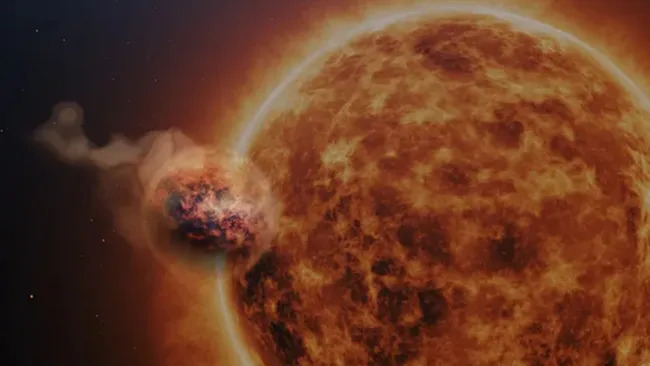A UNIQUE alien-like planet and its never-before-seen features have astronomers in awe.
The planet, WASP-107b, has an atmospheric composition that makes it look “fluffy” along with clouds filled with sand.
Data collected from the James Webb Space Telescope were observed by a team of European astronomers.
The JWST is capable of examining the atmospheres of exoplanets in our galactic neighborhood.
The findings were published in the journal Nature on November 15.
WASP-107b is an exoplanet that is nearby to Earth at only about 200 light-years.
It is dubbed fluffy because it has been found to be one of the lowest-density planets recorded.
The planet is about the same size as Jupiter, but it only has 12 percent of its mass.
Another unique trait is that takes only six days to orbit its home star.
The home star for WASP-107b is also smaller and a bit cooler than Earth’s sun which is causing it to have newly seen chemical reactions.
Most read in News Tech
Photons are able to penetrate deep into WASP-107b’s atmosphere due to the planet’s low density which is creating sulfur dioxide on the planet.
Water vapor and silicate sandy clouds were also discovered on the planet.
The silicate sand clouds reside high up on the planet, while lower levels of the planet are very hot, the study found.
The sand that rains down comes in contact with the very hot layers, evaporates, and recondenses into the cloud, per the study.
The new study will help researchers get a better understanding of the chemistry of distant planets.
Along with how there can be many variations of possibilities with different chemical reactions on other planets compared to Earth.
The lead authors of the study both agreed that the JWST is offering completely new outlooks on other planets.
“JWST enables a deep atmospheric characterization of an exoplanet that does not have any counterpart in our Solar System, we are unraveling new worlds!” lead author Dr. Achrène Dyrek at CEA Paris said in a release, per EurekAlert.
Lead author Leen Decin of Katholieke Universiteit Leuven in Belgium added his two cents as well and explained how WASP-107b’s discoveries are groundbreaking for space science.
“JWST is revolutionizing exoplanet characterization, providing unprecedented insights at remarkable speed,” Decin said, per the release.
“The discovery of clouds of sand, water, and sulfur dioxide on this fluffy exoplanet … is a pivotal milestone.
“It reshapes our understanding of planetary formation and evolution, shedding new light on our own solar system.”










